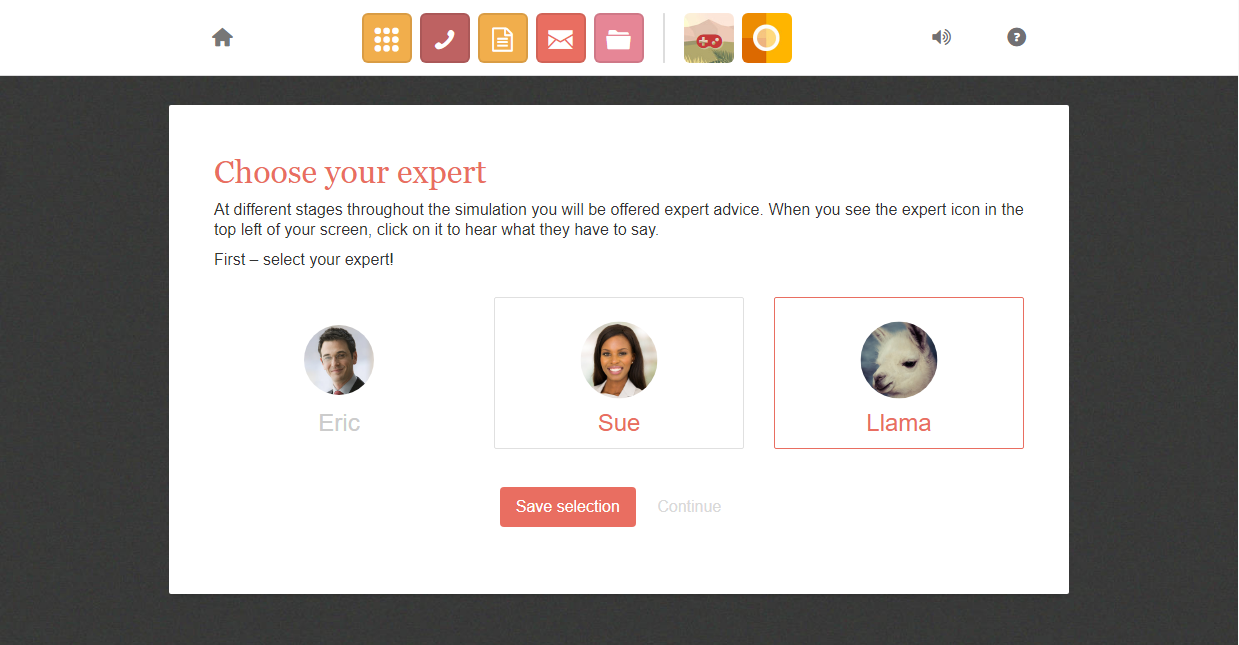Humour (if done well) can really make a learning course stand out. It creates a more relaxed environment in which learners feel more open to trying things out. No one minds getting things wrong – a great way to learn – if they’re having a laugh. Humour in learning (if done well) also reverses the tone of top-down authority which learning courses so often adopt, and it fosters an emotional connection between learner and learning.
Those warm fuzzy feelings have a tangible benefit. Humour (if done well) is one of the most effective ways of engaging learners. Neuroscience shows that when we laugh, our brains release dopamine, a neurotransmitter which activates reward-motivated behaviour and participation. So it not only biologically invests learners, but also increases retention. With all that in mind, why wouldn’t you turn your learning into Seinfeld on steroids?
Well, you’ll notice that every time I say something positive about the use of humour, I qualify it with ‘if done well’. That’s because there are many potential pitfalls to using it. One misstep and your humour can have the opposite effect, actively disengaging learners.
So how can you get it right and make sure you don’t become the David Brent of learning?
Consider your subject matter
It’s true that using humour in learning can inject some fun into what can otherwise be rather dry content. However, there are some topics for which humour might not be appropriate. You don’t want to trivialise or appear insensitive to certain subject matters.
But equally, humour can be one of the best ways to approach difficult personal topics or trying times, as comedians Maria Bamford and Tig Notaro do with their OCD and breast cancer, respectively. It’s one of the ways we can humanise and process difficult issues, and sometimes those moments we’re both laughing and crying are when true connections are formed – just look at the success of Comic Relief. That kind of connection can prove invaluable in a learning context, whether it’s livening up compliance, or confronting unpleasant subjects such as modern slavery.
Consider your audience
Humour is often based on the subtle nuances in a language, so if you’re writing a course for a multinational organisation that will be translated, or covers a diverse array of language proficiencies, you need to consider whether your joke will get lost in translation. Then you’ve also got to think about the dialects and regional differences that can make the difference between a joke being a diamond or a dud.
For example, there are plenty of phrases and idioms in both American and British English which are incomprehensible to the other. So do your research. To bring it back to David Brent, think about the differences between The Office on each side of the Atlantic. Both great shows, but both using slightly different humour that caters to their audience, as Ricky Gervais himself notes.
Think about which type of humour is most appropriate
There are many different types of humour, each with their own qualities, and each more or less suited to a particular subject matter or purpose. You’ve got sarcasm, irony, parody, satire, and even farce to work with, and you need to choose the right one. This partially relates to the above point, as different types of humour may resonate with different audiences, but it also depends on the content you’re dealing with.
Parody, for example, can be a remarkably effective means of highlighting those irrational behaviours that may be the target of learning interventions. In one of our data protection courses, we use video to show a security breach in action. But it’s not dramatised. Instead, we use a relatable office environment to show an employee blithely offering to take a box full of sensitive data out to a wheelie bin for their colleague. This kind of humour makes learners chuckle, but also makes them think “yeah, that could be me.” And they’ll remember it for a lot longer, too (this video is apparently still doing the rounds).
Make humour the sidekick, not the star
Humour in learning works best when it’s used to underpin the learning rather than to dominate the course. As with using pop culture in your content, you want to make sure that your learners remember the actual learning content, not just that time they had a good laugh doing a digital course. You want your learners to find themselves laughing with the learning, not at it. It’s better to let humour shine through thanks to great writing and instructional design than to distract learners with gimmicky joke content.
Don’t force it
If you’re not naturally funny, that’s fine! There are plenty of other ways to engage your learners, make an emotional connection with them and improve their retention. Plus, collaboration is a wonderful thing. Circulate your draft to those on your team who are slightly wittier and see what you can come up with together. But whatever you do, don’t force humour. There’s nothing worse than watching someone struggle to make an ultimately poor joke… it’s awkward for everyone.
Top tip: try flexi humour
If you think a joke may not play well with all the learners, you can still incorporate it but do so by using it in a flexible, optional way. For example, in our recent award-nominated project management simulation, the learner must select their own mentor at the beginning of the course. One of these mentors, as you can see below, is a llama. Random, wacky, memorable. But potentially not for everyone. That’s exactly why we have two other mentors, Eric and Sue, two perfectly ordinary human mentors. We’re all about giving the learner control, and that can apply to opting in or out of humour too.

So, there we have it. How to bring humour into your learning (and do it well). If you do, you can infuse your learning with that enjoyable engagement factor, warming learners to the course and making them more amenable to your message, and ultimately facilitating behaviour change more easily. Most importantly, it can do all of these things without your learning becoming a joke. So, what are you waiting for? Get (wise)cracking.





